Julie Duty is the founder and executive director of United Sound, an organization that offers peer mentoring and musical involvement to special needs students at the high school and college levels. “Our mission is to provide musical performance experiences for students with special needs through peer mentorship. In my experience as a music educator, the music room is the best thing on any high school campus, and this program is designed to add to what is already good, without detracting from what exists. United Sound grew out of my experiences as an educator, my attempts to integrate special needs students into my band, and the need I perceived to develop specific tools and materials to help these students.”
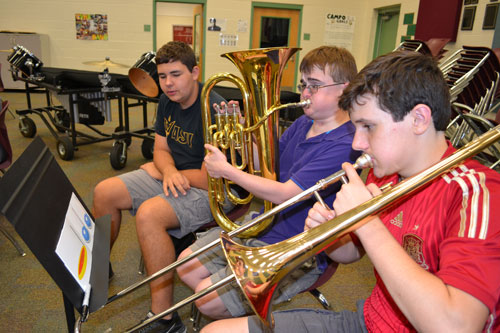
What tools or training do you provide to schools that participate, and particularly the student mentors who work directly with the special needs students?
At the heart of United Sound is the relationship between the peer mentors and the special needs students. In fact, this relationship is the primary focus of the program, and in that respect, it is like a club. To get started, it requires both a music teacher and a special education teacher. The special education teacher trains the peer mentors to be teachers, and the music teacher is in charge of the new musicians. Both the band director and the cooperating special education teacher receive a few hours of training, held in part via video and in part over Skype.
There are two training sessions for peer mentors, led by the special education teacher. The first session addresses how to be a mentor. It talks about patience, praise, that not all days will be good days, and how to be a good friend. The emphasis for the peer mentors is to be encouraging to the new musicians. We use phrases like “Any effort is a good effort,” because we believe that applies to all musicians. A huge goal of our program is never to use the word no. In the training sessions, we train the mentors to say “Good job, now let’s try this.” Praise the effort and redirect. I had a band director whose students had completed the training sessions and then went to band camp, which was after school. This director called me to say that the mentors were using their United Sound training with the freshmen, and it built morale quickly.
The second session addresses how to use our curriculum. The first book only has four rhythms, and they are represented by foods. Cake is a quarter note, soup (spelled souuup) is a half note, do-nut (the hyphen is intentional) represents two eighth notes, which in our method book always occur together. We also use quarter rests, for which students say “rest.” We also use colors. For string players, strings are labeled orange, yellow, green, and purple. Three green cakes would mean three quarter notes on the D string. Wind players learn three notes. Clarinet and saxophone players learn concert D, C, and B-flat; flutes and brasses learn concert B-flat, A, and G. We pick these notes because they can be played with either hand.
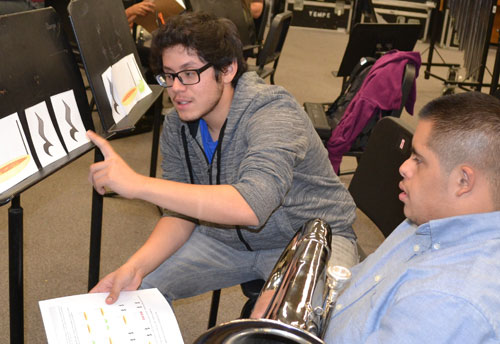
What is a typical meeting like?
We think of the program as a club that meets once per week for 45 minutes. Most high school programs meet after school and our universities all meet in the evening. There are only two rules: the mentors teach, and everyone performs at least once each semester; the students perform one piece on a given concert. Most new musicians do not play all the notes.
The mentors arrive a little early to get the room set up the room. The best thing to do is remove any extra chairs and stands that could make things confusing. These students then welcome the new musicians into the room. Peer mentors are paired at a ratio of 3:1 with new musicians, so both groups have ample support.
At the beginning of the semester, when all the students are getting to know each other, we provide games and activities; after the first couple weeks, it is rarely necessary. In the first week, we play a game called “Find Someone Who,” where each four-person group has a list of questions and has to talk to other groups to find out who has a certain trait, such as liking Harry Potter movies or being older than 18. The law allows students to stay in high school until age 22, so this question is an especially good way to meet some of the new musicians. Students quickly bond over shared tastes and similarities. We also encourage each group to make a poster about what the members have in common; this is another opportunity for students to connect before anyone plays a note.
Our general timeline is for the new musicians to begin to learn to play their instrument by working out of our method book for nine weeks, then halfway through the semester, the mentors create a modified part from the score, specific to the skills of the new musician, using United Sound notation.
Students start at the beginning of the method book each week, covering exercises that are easy and that everyone can play well, so the day always starts off with success. How much time is spent on beginning exercises is up to the mentor students. At the start of the semester, the new musicians are learning new skills, so 80% of the rehearsal time might be skills out of the method book and 20% of the time with the music teacher in the center of the room leading the group in an activity. At the end of the semester, it is the opposite – 80% with the music teacher guiding rehearsal, 20% with the student mentors. During work with the mentors, the music and special education teachers work the room, helping everyone to become a better teacher.
We encourage teachers and mentors to spend a minimum of 15 minutes of each 45-minute meeting intentionally off task. This is at its core a relationship-building program, but music students can be so focused – because that is how rehearsals are usually run – that we have to help them build in that down time. If it is safe and appropriate to step in the hallway to get a drink and talk about how everyone’s day went, that is an option. Such socialization is a big part of the high school experience that not everyone gets to have. The special education teacher helps everyone decide what is best.
Choice is important. Nobody likes to be told what to do, so mentors are taught to give choices. Which line do you want to play? Do you want me to play with you or do you want to play by yourself? Do you want me to track the music with my finger?
At each school, one of the mentors is selected as a Club President, receiving monthly training from United Sound and help in planning lessons. Individual clubs should be student led. The goal of these collaborations is never independent performance by the new musicians, but collaborative performance that also provides social connection. Training the mentors is just as important as training the new musicians.
From where do the performance parts come?
The mentors write the parts because they work closely with their musicians. If a student has only learned B-flat, the mentor writes a part that only has B-flats at just the right time. The difference between having a manageable part custom written and making noise while the band plays is critical, and something that the parents of new musicians have noticed and appreciated. The students know their part is important and are motivated to count correctly.
Even though the mentors are inexperienced at reading and transposing conductor scores, new musicians only learn one to four notes, so most of what the mentors do is search the score for times when it would be best to play those notes.
When did United Sound start? How much has it grown since then?
We started testing the materials we developed for the program in early 2014 at Desert Vista High School in Arizona. We learned that kids were successful at the instruments they wanted to play the most, just like everyone else. So, from that point forward, the new musicians participate in an instrument trial night, just like any other student starting band or orchestra. People talk about me as an advocate for special needs students, but I consider myself an advocate for music education. I want everyone to be in band, and right now we are missing out on the 13% of public school students who receive services for special education.
At a trial night I attended, a non-verbal student gestured toward a euphonium, but his mother said he couldn’t play it because he didn’t have the muscles in his face to talk. I promised we would switch him to percussion if it didn’t work out, but insisted there was no harm in letting him try. Not only could he play the euphonium, he blew through our materials and quickly moved to a typical method book. This student could not talk, but he could play well. He marched in the Rose Parade with us. We rarely think to invite such students to join band, but this student thrived.
In 2014, I targeted four schools in Arizona, plus Carmel High School in Indiana. I purposefully chose three high-profile schools that would get people’s attention and two Title I schools; one each from an urban and a rural area. I wanted to show that United Sound could work everywhere. When Carmel played at the Midwest Clinic in 2014, the United Sound students played a piece on that concert. This year we will have United Sound chapters in more than 50 schools from 15 states..We have several collegiate chapters as well, including Western Carolina University, Ball State University, and Arizona State University.
Where have United Sound students performed?
The recent performance of United Sound students at the Rose Bowl Parade with the Honor Band of America from Music for All was a big deal. The band included 250 students from 40 states, among which were five new musicians from United Sound and eight peer mentors. The theme of the Rose Bowl Parade was “Echoes of Success” and emphasized mentorship.
In the fall of 2016, United Sound students played alongside the Ohio State marching band at the Music for All Grand National Championships in Indianapolis, Indiana. They performed in front of 30,000 people who attended the semifinals award ceremony. As always, the United Sound students played modified parts created by their peer mentors.
In March of 2016 and 2017, students from United Sound performed at the Music for All National Concert Band Festival. Every year we have a new piece commissioned for the United Sound students.
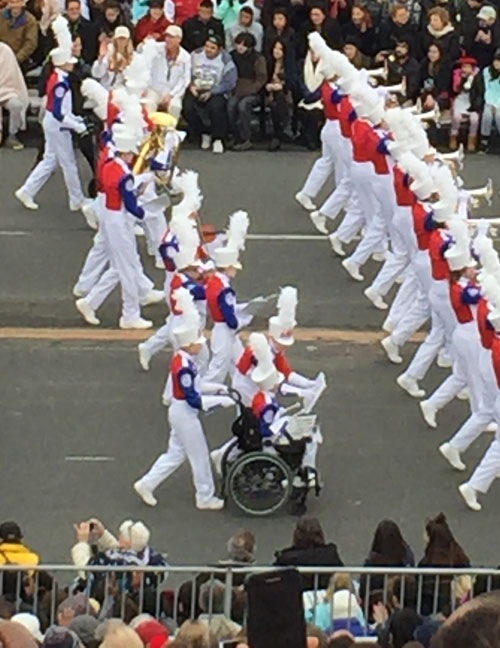
What does it cost to start a United Sound program?
There is no cost, thanks to the support of our corporate donors, but we do ask mentors to host a fundraiser at their respective schools to pay it forward to start a program on the next school.
What difficulties should the teachers watch for?
The biggest difficulty is convincing the special education department to do this with you. These teachers have experienced a lifetime of things that looked good. but never work out. By their late teenage years, some of these students have been told no many times or been in mentoring programs where the mentors stopped showing up after a couple weeks. It can take some work to convince special education teachers and parents that this time will be different. Fortunately, band and orchestra students are different.
The music and special education teachers are usually the two busiest people in the building, so scheduling one more hour into the week for both teachers can be difficult. Once the program is going, it should take no more than one hour a week: the 15 minutes it takes to get ready and the 45 minutes each meeting lasts. Spending more time than that is doing it wrong. Sometimes teachers call me to talk about the wonderful ideas they are trying to implement. If they have a good idea we offer to complete it for them so the other schools with United Sound programs can try it as well. Other times, we recommend against their ideas for the reason that if it isn’t simple, it isn’t sustainable. My only goal is for the teachers involved to get to the end of the year, realize how easy it was, and agree to do it again next year. It is better to go slowly and have a program that sustains itself for 20 years than make a big to-do about it and burn out.
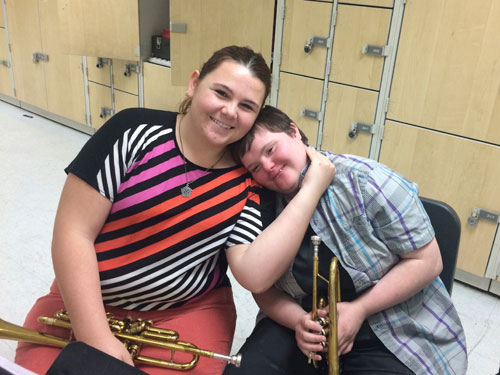
To learn more about United Sound, visit www.unitedsound.org. Click on the teacher registration form on the home page to get started.
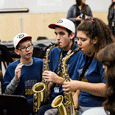
.jpg)




